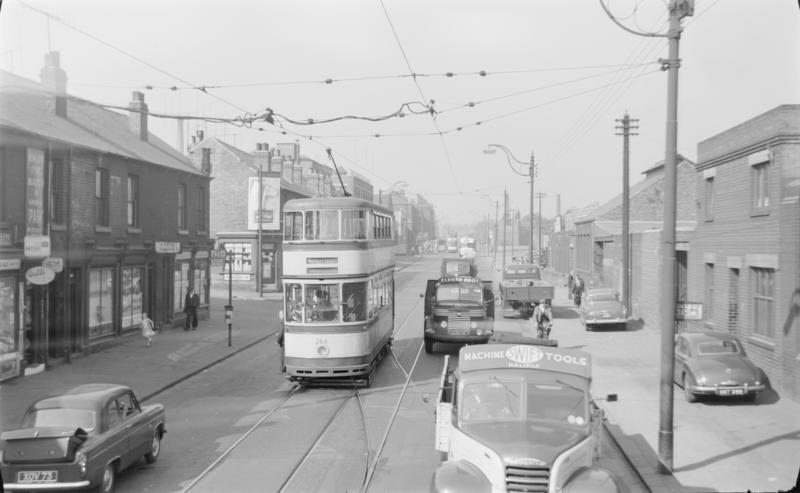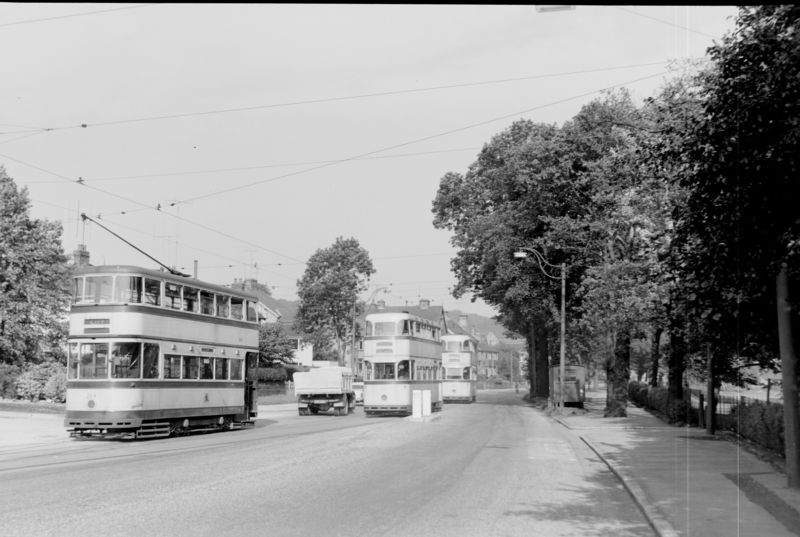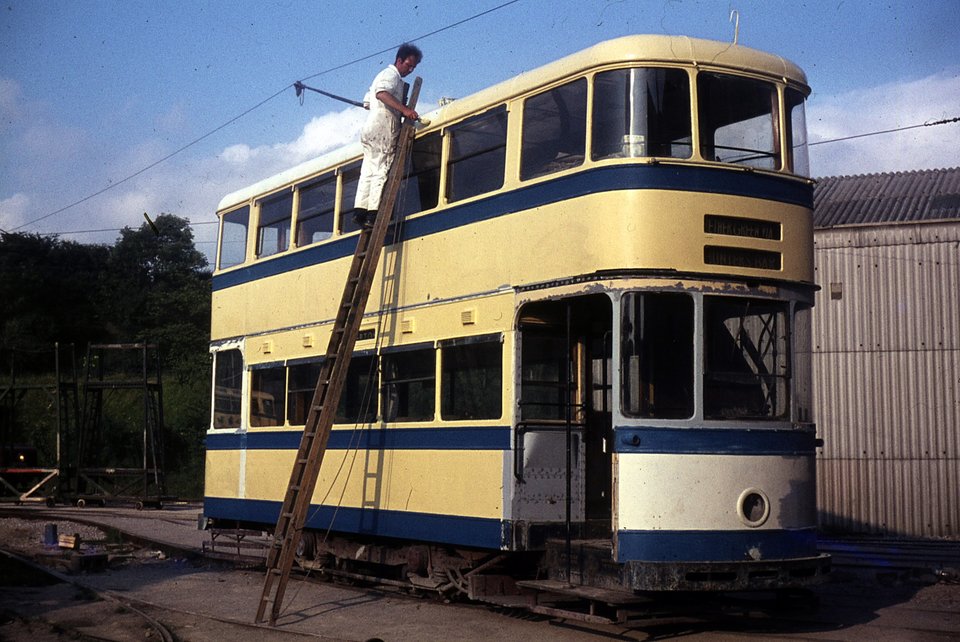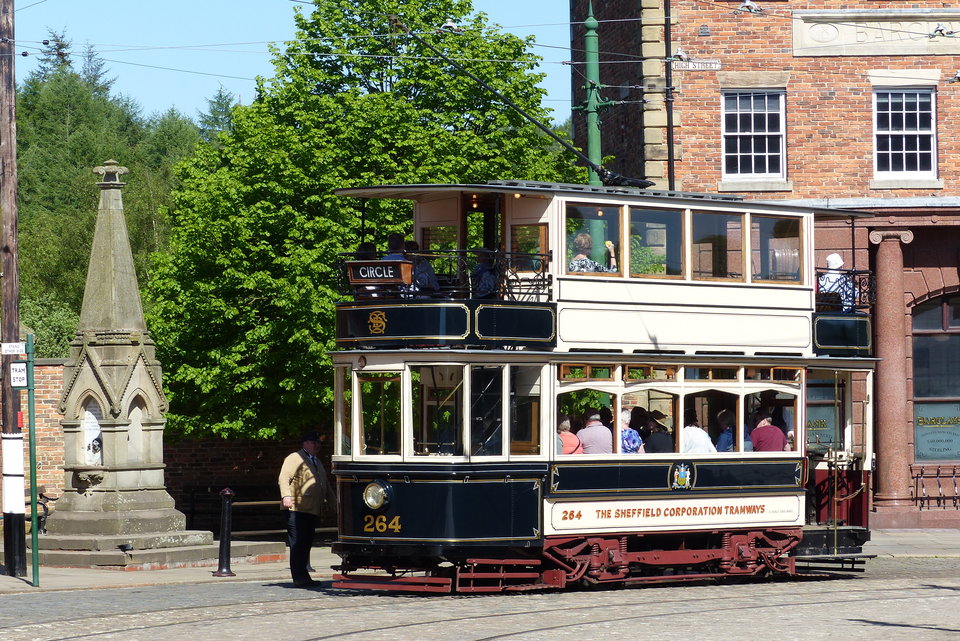Sheffield Corporation Transport No. 264
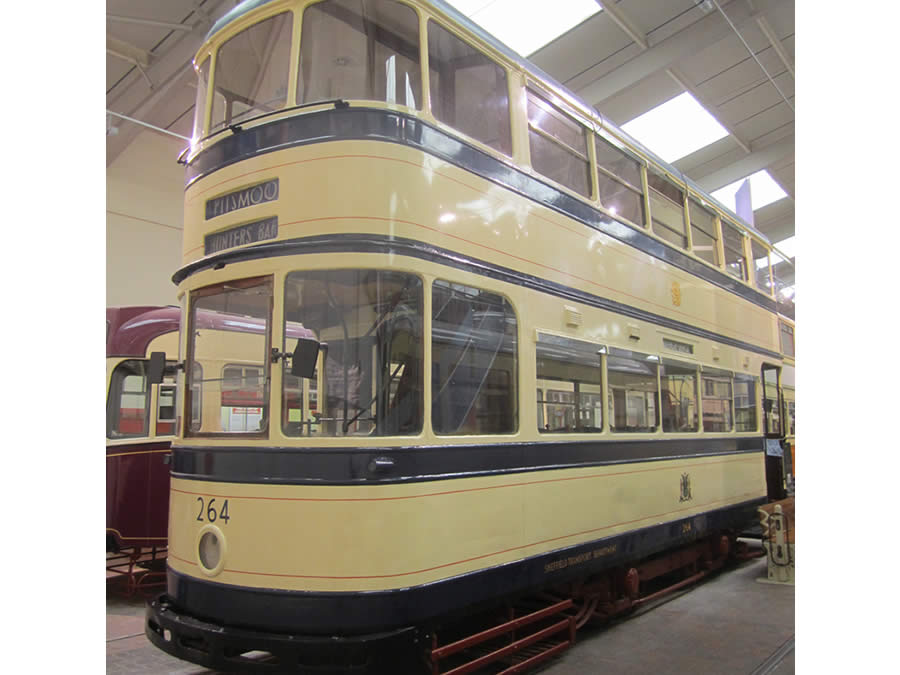
Photo: Jim Dignan
Although only three years younger than its stable-mate, number 189, Sheffield 264’s altogether sleeker and more modern appearance shows the benefit of Sheffield Transport Department’s continuing quest to keep pace with the latest advances in tramcar development that were being developed in other comparable undertakings. (Edinburgh 35 provides a contemporary example). The result was a batch of ‘improved standard’ tramcars that were often referred to as ‘domed roof’ cars, since this was one of the most obvious visual features that set them apart from their ‘flat-roofed’ predecessors.

264’s semi-streamlined design with its domed roof contrasts with the more traditional flat-roofed design of its predecessors such as 189. Photo: Jim Dignan.
The 67 new cars that were built to this design retained the same dimensions and technical specifications as their forebears, but their pleasingly clean styling with ‘semi-streamlined’ upper deck ends and new cream and blue livery clearly set them apart even though the changes were largely cosmetic. Although they still lacked platform doors, the trams did feature individually opening windows augmented, on the lower deck, by air deflecting ventilators.
Specification
- Type of tram
- Double deck fully enclosed four-wheel improved standard class electric tramcar
- Livery
- Cream and azure blue
- Seating capacity
- 61 (37 upper saloon, 24 lower saloon)
- Date built
- 1937
- Manufacturer of body
- Sheffield Corporation Transport
- Manufacturer of truck
- Peckham P22
- Gauge
- 4’ 8½”
- Motor
- MV 102DR 2 x 60 hp
- Controller
- BTH B510
- Current collector
- Trolley
- Withdrawn from service
Continued in normal operation until the final day of service on 8 October 1960.
- Subsequent history
Purchased privately and transported to Crich on 17th December 1960.
- Restoration history
Restored over an extended period of time by a small band of volunteers without access to workshop facilities and resources. A detailed account of the restoration process appeared in the Society Journal (no. 213) for January 2011.
- Current status
- Conserved; on display
- Date started operating at Crich
- 1970. Has operated in 11 seasons, most recently in 1980.
- Total mileage covered at Crich
- 3,152
- Current location
- Exhibition Hall
- 1937 – 1960Fully operational on original tramway
- 1960 – 1970In storage and undergoing restoration
- 1970 – 1980Operational at Crich
- 1980 –On display

